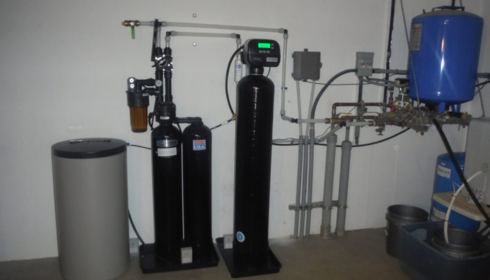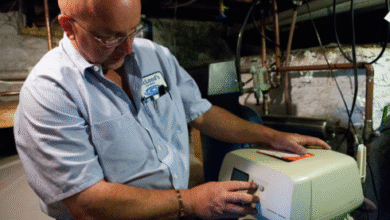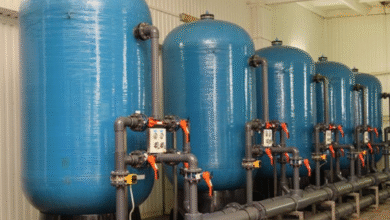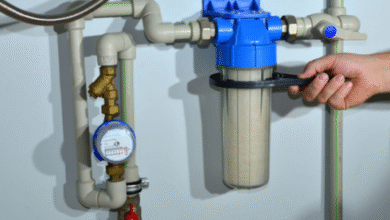When Iron Sneaks into Your Well Water: A Michigan Homeowner’s Story

If you’ve ever poured yourself a glass of water and noticed a strange metallic tang or reddish tint, you’re not alone. In fact, folks across Michigan—especially those with private wells—deal with this all the time. It’s one of those things you don’t think about until it shows up in your sink, your shower, or worse, your laundry. Water should feel fresh, clean, and honestly kind of invisible. But when iron in well water Michigan homes becomes a daily nuisance, it’s impossible to ignore.
I’ll be real with you: dealing with iron in water isn’t glamorous. It’s messy, stubborn, and sneaks into corners of your life you wouldn’t expect. Towels end up with rust-colored stains, appliances look prematurely aged, and that “clean” smell after a shower doesn’t feel so clean anymore. And if you’ve ever filled up a white coffee mug with well water tinted orange, you know it’s a vibe killer.
Why Does Iron Even Get There?
It’s easy to forget that water’s not just H₂O. When it travels through the ground before reaching your well, it picks up all sorts of minerals along the way. Iron is a natural part of the soil and bedrock here in Michigan, so if your well draws from underground aquifers rich in iron deposits, guess what—you’re drinking it.
The tricky part is, not all iron looks the same. Sometimes it’s dissolved (you can’t see it right away), and sometimes it’s in particle form, giving that murky tint. Then there’s the kind of iron-loving bacteria that makes slimy, orange buildup in your pipes. If you’re cringing, don’t worry—you’re not alone. Plenty of well owners have faced the same situation, and the good news is, it’s fixable.
The Frustration of Everyday Living with Iron
Living with iron in your water is like being in a never-ending battle against rust. You clean the sink, and the stains come back. You bleach the laundry, and the whites still don’t look white. Even water-based appliances—dishwashers, coffee makers, washing machines—seem to suffer. Over time, the mineral buildup clogs pipes, reduces water pressure, and shortens the lifespan of expensive household systems.
I once heard a neighbor joke that she’d stopped buying white shirts altogether because no detergent could undo the stains. That’s when you know the problem has taken over your lifestyle. For some people, even the taste of water is off-putting, leaving every sip feeling less refreshing and more metallic.
Enter the Iron Filter
This is where solutions come in. The most common, practical fix for homeowners is an iron filter for well water. Think of it as a superhero for your plumbing. These systems are designed to trap or neutralize iron before it flows through your taps, protecting everything downstream.
There are different kinds of filters depending on the type of iron you’re dealing with. Some use air injection, others rely on oxidation, and a few use special resins. The choice depends on how bad the problem is and what form the iron takes. What I love about these filters is that once they’re properly installed, they quietly do the work in the background, saving you from constant scrubbing and frustration.
It’s not just about convenience, either. Clean water also means healthier skin, longer-lasting appliances, and a lot less money wasted on cleaning products or replacements.
The Rust Stain Struggle
Beyond the technical side, there’s something psychological about seeing rust-colored water stains in your home. It makes the space feel neglected, even when you’re doing your best to keep it spotless. Guests notice, too—it’s one of those embarrassing homeowner headaches nobody really talks about.
So naturally, people go searching for ways on how to remove rust from water or at least how to get those stains out once they’ve set in. There are quick fixes like rust-removing cleaners, vinegar scrubs, or even specialized detergents for laundry. But here’s the hard truth: unless you tackle the source—the water itself—you’ll be stuck in a cycle of temporary cleanups. The stains will always return.
Why Michigan Homes Need Extra Attention
Michigan is beautiful, no doubt, but its geology means iron-heavy well water is common across the state. Add in the fact that many rural households rely exclusively on private wells, and you’ve got a widespread issue. Unlike city water, which is treated and regulated, well owners shoulder the responsibility of testing and treating their own supply. That independence can feel empowering, but it’s also a big job when issues like iron pop up.
On top of that, iron often shows up alongside other water quality concerns like hardness or even sulfur smells. So, solving the problem usually requires a tailored approach rather than a one-size-fits-all solution.
Living Better with Clean Water
At the end of the day, investing in water treatment isn’t just about solving an inconvenience—it’s about improving your quality of life. Clean, clear water makes cooking, bathing, and cleaning feel effortless again. It keeps your home looking fresh instead of stained, and it gives you confidence in what you’re drinking.
I think that’s something worth prioritizing. We spend money on new furniture, better appliances, and home upgrades all the time. But water is the one thing we use every single day, in countless ways. If it’s not clean, the impact shows up everywhere.
Wrapping It Up
If you’re a Michigan homeowner struggling with iron in your well water, know this: you’re not alone, and you don’t have to live with it forever. Whether you opt for an advanced iron filter system or start with professional water testing to pinpoint the problem, there’s a way forward. And once you’ve made the switch, you’ll wonder how you ever tolerated rusty sinks, orange-streaked laundry, or that unpleasant aftertaste in your drinking water.




